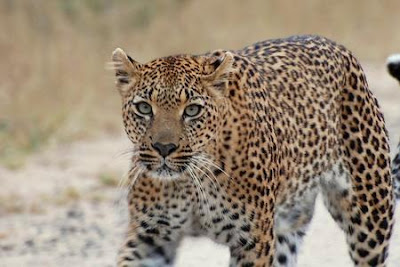Today I want to introduce you to Snufkin (or EF021), an adult female in Ecthelion group.
Snufkin is four years old, and she was born while I was still trying to persuade Ecthelion to trust me. This is a painstaking process (it takes about four months) and Snufkin helped speed things along. Like all small pups, she was a little gormless. She'd come tottering out of the burrow and waddle straight over to where I sat. The adults would stare, aghast. Weaving back and forth in agitation, they'd urgently try to call her back. Of course Snufkin totally ignored them, too busy sniffing my binoculars or chewing on my trousers. Finally someone would pluck up enough courage to come crawling, on their belly, toward me. They'd inch forward, bit by bit, before finally snatching up Snufkin and dragging her back to the burrow. This didn't deter Snufkin, of course, and within moments she'd come tottering back over again.
Snufkin retained her friendly, confiding air, and she's one of my favourite mongooses.
But her real forte is unselfishness.
When she was just ten months old, Morrigan (the group's dominant female) produced a new litter of pups. Although Snufkin wasn't yet full grown, she spent hours fussing over the pups, and once they began munching solid food (at about 3.5 weeks) she ran herself ragged finding bugs for them.
Snufkin is named after a character in Tove Jansson's 'Moomintroll' books, who is independent, public spirited and plays songs (e.g. 'All small beasts should have bows in their tails') on the mouth organ.
Now, the first time I saw mongooses feeding their pups I almost went into shock. This was NOT something that mammals did! Sure, birds bring food to their nestlings, but what choice do poor, milk-free birds have? In all my experience, I'd only ever seen mammals letting their ankle-biters share their own meal. And among the marsupial carnivores I'd worked with in the past, even this was done most begrudgingly. So it was with stunned amazement that I watched as an excited mongoose snatched up the spider he'd just found and bounced enthusiastically over to a small pup. He carefully placed the soggy spider on the ground before the pup, and sat watching - totally enraptured – while the inept little creature munched at it. When the spider made a break for freedom, the adult hurriedly recaught it, disabling it with a couple of surreptitious bites before presenting it again. And when the pup's attention began to wander, the adult carefully nudged the item with his paw. Ah, the wonders of altruism.
Like baby birds, mongoose pups beg noisily using special calls, and hungry pups beg more than well fed pups. Experiments have shown that the more racket the pups make, the more likely it is that an adult will part with its hard-won prey. But with a whole litter of pups madly begging, and everyone in the group contributing edibles, how on earth do they divvy up the spoils fairly?
Banded mongooses deal with this problem in a most civilised manner. Each pup hooks up with one specific adult (its 'escort') who provides the pup with all its food. This means that banded pups never have to fight over food, and they benefit from having their siblings nearby (the more begging the adults hear, the more they donate).
A banded mongoose pup with its one and only 'escort'.
The arrangement in meerkats is much less amicable. Adult meerkats tend to feed whichever pup is nearest to them, so the pups dog the adults' steps, jockeying fiercely with one another for the best position, and changing adults frequently. Fights between spitting, growling pups are common place, as they try to stop each other from getting too close.
Meerkat pups taking a break from their competitive free-for-all.
Photo borrowed from here.
In dwarf mongooses, it's not aggression that pays but speed. Adult dwarf mongooses announce their imminent donation with a special 'come and get it call', so the pups loiter near the centre of the group and then hurtle madly toward anyone who calls. Whichever pup arrives first, gets the food.
Ready, steady, GO! Dwarf mongoose pups waiting to be called for lunch.
Snufkin's enthusiasm for pup-feeding didn't abate over the years, but in March 2008 tragedy struck.
She broke her left foreleg.
Foreleg injuries are bad news for dwarf mongooses because they dig for most of their food. And digging with just one paw is hopelessly inefficient. Snufkin steadily lost weight. But then things got even worse. The injured leg became totally rigid; she had to drag it about stuck out stiffly to the side. It was forever snagging on the vegetation or getting jammed against rocks. Searching for food clearly pained her and she spent much of the time resting. But Snufkin - being the mongoose she is - didn't just recline in the shade, she'd painstakingly climb up to the top of a boulder or into a tree so she could spend her resting time watching for predators and keeping the group safe. This always stressed me out because, when a predator did threaten, Snufkin had great difficulty clambering down to safety. Even when she finally reached a bolt hole, it usually took her two or three tries to get inside, having to manoeuvre her rigid leg to fit. Then the tendons in her leg began to shrink, curling her paw inwards until it withered into a clenched fist. I couldn't see how she would ever survive the coming winter.
But miraculously, after about seven weeks, she began to get some movement back into her leg. Gradually the stiffness lessened until she was walking almost normally. The deformed paw took a lot longer to recover, but today she's entirely healthy; and happily dedicating herself to the group's littlest members.
Snufkin with her little brother Cadellin.












































